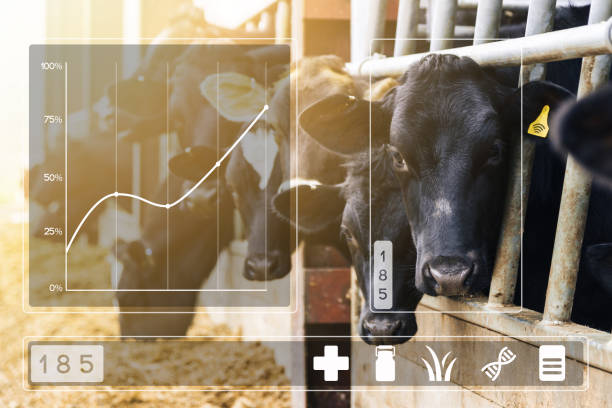Advanced Milking Systems Boost Efficiency
Dairy farms across America are embracing new technologies to improve efficiency and sustainability. One key advancement is automated milking systems (AMS) that milk cows without human labor. Cows can enter these robotic milking stalls on their own schedule to be milked. The stalls wash and stimulate the udders, attach milking cups, and divert the milk into storage tanks.
AMS have sensors to track each cow’s milk output and health. If a cow’s production drops, the system sends an alert so the farmer can provide extra care. The constant data also helps farmers adjust feed rations using specialty feed ingredients from companies like Energy Feeds International to maximize milk yields. With AMS, cows experience less stress and disturbances, which creates happier, healthier herds.
Cutting-Edge Feeding Systems Reduce Waste
Another innovation on dairy farms is high-tech feeding systems that tailor feed to each cow’s needs. Feed is the highest cost for farmers, so wasting it eats into profits. New feeding stations have load cells to weigh leftovers and ensure cows finish meals. This data transfers to on-farm software to adjust future feed amounts automatically.
Some systems even use laser optics to scan a cow’s body condition. If she is over or under weight, it dispenses a personalized ration enhancing health and milk quality. Smart scale feeding stations also permit farmers to incorporate more byproducts from food makers or brewers into feed. This sustainable practice diverts waste while cutting feed costs.
Disease Prevention with Genomics
Genomic testing is giving dairy farmers invaluable insights into cow health. Sequencing each animal’s genetic code helps to predict future health risks. Farmers can breed cattle selectively to pass stronger immunity traits to offspring. Specific genes also indicate if cows carry resilience against certain illnesses, heat stress and infertility.
Barn Monitoring for Greater Comfort
New dairy barns also use smart sensors to fine-tune environments for cow comfort. Monitoring systems continually track temperature, humidity, ventilation, and stall activity. Ventilation automatically adjusts to keep barns cool in summer and draft-free in winter. Sensors detect airborne gases like ammonia and release cleansing agents if levels rise too high.
Manure Management Protects Lands
Dairies accumulate copious amounts of manure, which farmers use to fertilize croplands. But applying too much manure releases excess nutrients that pollute waterways. New agronomy tools help farmers implement precision nutrient management.
Software algorithms analyze manure nutrient levels, soil types, crop needs and weather trends. Then they generate geographic field maps guiding where, when, and how much manure to spread per acre. This precision protects lands by capping nutrients to what soils and crops actually need each season.
Sustainable Calf Care
Even young dairy calves benefit from tech advances that promote sustainable practices. Many farms now use automated feeders with nipples that mimic dams. Calves wear a micro-chipped collar that grants them access to milk or supplements multiple times a day. Each calf receives a controlled ration logged into farm management software. This reduces waste from overfeeding and frees up labor.
Calf hutches also use smart sensors detecting ventilation issues, unfavorable odors, or illness symptoms. Some systems can call the farmer if a distressed calf needs assistance. With innovations like these, dairy farmers can focus more time on land stewardship assured that their barn has everything under control.
Conclusion
From birthing pens to robotic milkers, dairy farmers now have access to technologies, making operations more sustainable. What used to require back-breaking effort can now happen automatically with data guiding decisions. With fewer chores to do, farmers get time back to care for animals while supporting conservation beyond the barn. Ultimately, as dairy tech evolves, so does progress toward ethical, eco-friendly milk production.

